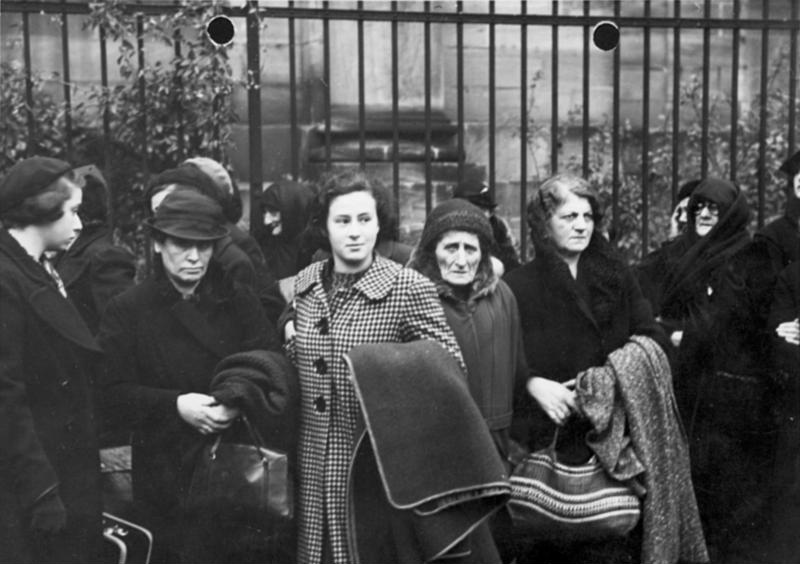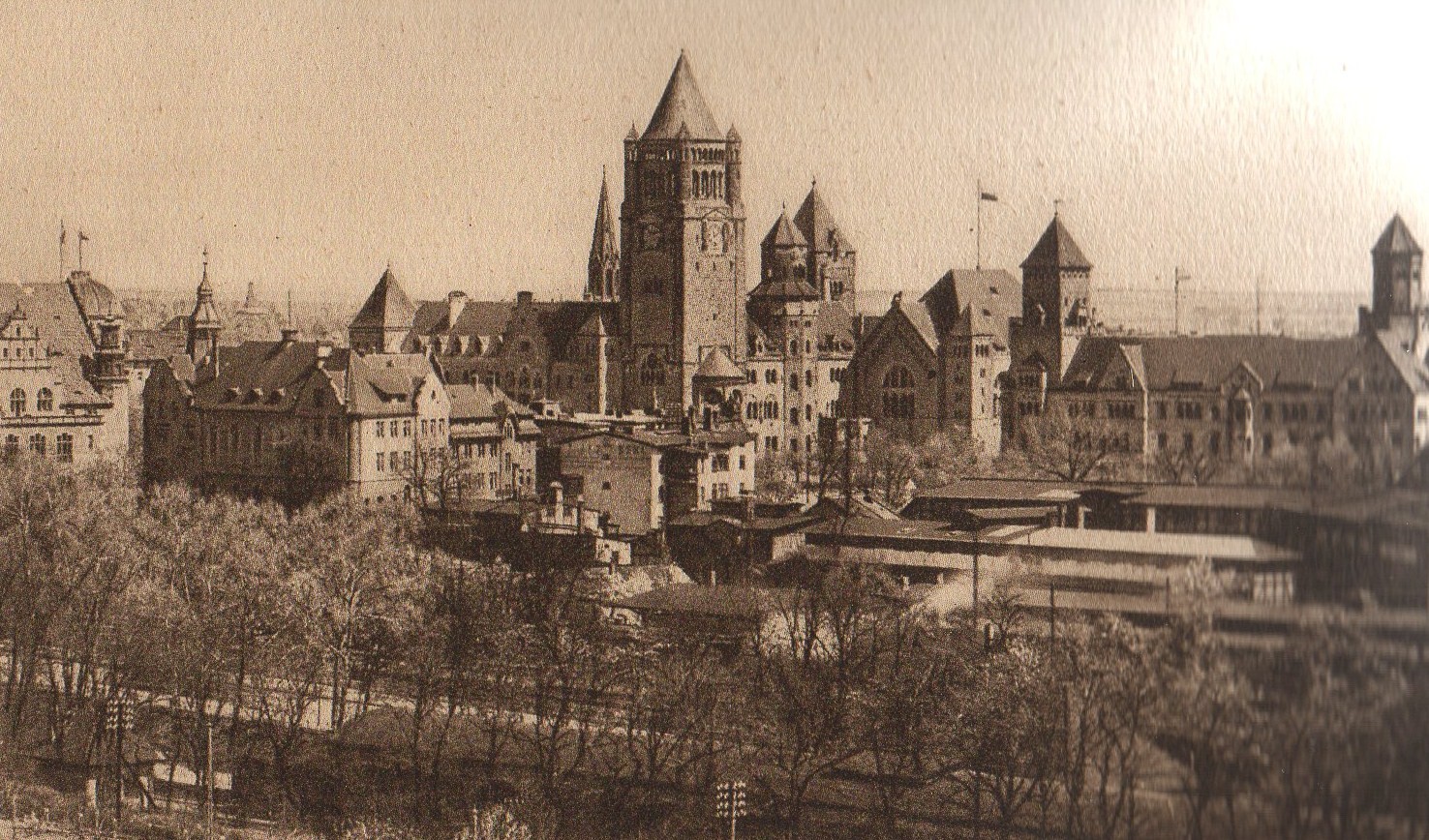|
Hugo Helbing
Hugo Helbing (23 April 1863 – 30 November 1938) was a German art dealer and auctioneer. The Helbing art shop Born in Munich, Helbing was a son of Sigmund Helbing, who ran an antique dealer in Munich from the middle of the 19th century. His sons also became active in this field: Helbing had a respected coin shop in Munich, his brother Ludwig opened an antique shop in Nuremberg, and Hugo Helbing founded the ''Kunsthandlung Hugo Helbing'' in 1885. From 1906 Helbing ran the company together with other co-owners, including his son Fritz from his first marriage. The internationally renowned house had branches in Berlin and Frankfurt, and Helbing was appointed to the rank of ''Kommerzienrat''. Helbing's auctions, which lasted several days and were held in collaboration with Paul Cassirer from 1916 until the 1920s, were considered social events and were "a piece of cultural history of our century". Between 1930 and 1935 alone, the Helbing auction house published 123 auction catal ... [...More Info...] [...Related Items...] OR: [Wikipedia] [Google] [Baidu] |
Kristallnacht
() or the Night of Broken Glass, also called the November pogrom(s) (german: Novemberpogrome, ), was a pogrom against Jews carried out by the Nazi Party's (SA) paramilitary and (SS) paramilitary forces along with some participation from the Hitler Youth and German civilians throughout Nazi Germany on 9–10 November 1938. The German authorities looked on without intervening.German Mobs' Vengeance on Jews", ''The Daily Telegraph'', 11 November 1938, cited in The name (literally 'Crystal Night') comes from the shards of broken glass that littered the streets after the windows of Jewish-owned stores, buildings and synagogues were smashed. The pretext for the attacks was the assassination of the German diplomat Ernst vom Rath by Herschel Grynszpan, a 17-year-old German-born Polish Jew living in Paris. Jewish homes, hospitals and schools were ransacked as attackers demolished buildings with sledgehammers. Rioters destroyed 267 synagogues throughout Germany, Austria and the ... [...More Info...] [...Related Items...] OR: [Wikipedia] [Google] [Baidu] |
Thyssen-Bornemisza Museum
The Thyssen-Bornemisza National Museum (in Spanish, the Museo Nacional Thyssen-Bornemisza (), named after its founder), or simply the Thyssen, is an art museum in Madrid, Spain, located near the Prado Museum on one of the city's main boulevards. It is known as part of the "Golden Triangle of Art", which also includes the Prado and the Reina Sofía national galleries. The Thyssen-Bornemisza fills the historical gaps in its counterparts' collections: in the Prado's case this includes Italian primitives and works from the English, Dutch and German schools, while in the case of the Reina Sofia it concerns Impressionists, Expressionists, and European and American paintings from the 20th century. With over 1,600 paintings, it was once the second largest private collection in the world after the British Royal Collection.Jonathan Kandell"Baron Thyssen-Bornemisza, Industrialist Who Built Fabled Art Collection, Dies at 81,"New York ''Times'', 28 April 2002. A competition was held to house t ... [...More Info...] [...Related Items...] OR: [Wikipedia] [Google] [Baidu] |
Camille Pissarro
Jacob Abraham Camille Pissarro ( , ; 10 July 1830 – 13 November 1903) was a Danish-French Impressionist and Neo-Impressionist painter born on the island of Saint Thomas, U.S. Virgin Islands, St Thomas (now in the US Virgin Islands, but then in the Danish West Indies). His importance resides in his contributions to both Impressionism and Post-Impressionism. Pissarro studied from great forerunners, including Gustave Courbet and Jean-Baptiste-Camille Corot. He later studied and worked alongside Georges Seurat and Paul Signac when he took on the Neo-Impressionist style at the age of 54. In 1873 he helped establish a collective society of fifteen aspiring artists, becoming the "pivotal" figure in holding the group together and encouraging the other members. Art historian John Rewald called Pissarro the "dean of the Impressionist painters", not only because he was the oldest of the group, but also "by virtue of his wisdom and his balanced, kind, and warmhearted personality". Pa ... [...More Info...] [...Related Items...] OR: [Wikipedia] [Google] [Baidu] |
Imperial Castle, Poznań
The Imperial Castle in Poznań, popularly called ''Zamek'', "the Castle" ( pl, Zamek Cesarski w Poznaniu, german: Königliches Residenzschloss Posen), is a palace in Poznań, Poland. It was built under German rule in 1910 by Franz Schwechten for William II, German Emperor, with substantial suggestions from the Emperor. Since its completion, the building has housed government offices of Germany (to 1918, and during World War II) and of Poland (1918–1939, 1945–present). Naming The name of this structure is misleading, as the building is a palace rather than a castle. Another difference arises from the adjective ''imperial'' (''cesarski'') preferred by the Poles and ''royal'' (''königliches'') used by the Germans. The German name refers to William II as King of Prussia, in this function he built the palace as his provincial residence, while the Polish name refers to him as Emperor of Germany because the term "royal" is reserved for Poznań's Royal Castle, home to the earl ... [...More Info...] [...Related Items...] OR: [Wikipedia] [Google] [Baidu] |
Oswald Achenbach
Oswald Achenbach (; 2 February 18271 February 1905) was a German painter associated with the Düsseldorf school of painting. Though little known today, during his lifetime he was counted among the most important landscape painters of Europe. Through his teaching activities, he influenced the Kunstakademie Düsseldorf. His brother, Andreas Achenbach, who was twelve years older, was also among the most important German landscape painters of the 19th century. The two brothers were humorously called "the A and O of Landscapes" (a reference to their initials matching a common German reference to the Alpha and Omega). Life Family Oswald Achenbach was the fifth of ten children. His parents were Herman and Christine (née Zülch). There was little about the family to suggest that it would produce two of the century's most important painters. Hermann Achenbach was employed in a series of jobs, including beer and vinegar brewer, guesthouse owner, and bookkeeper. During Oswald's early ch ... [...More Info...] [...Related Items...] OR: [Wikipedia] [Google] [Baidu] |
Martin Bormann
Martin Ludwig Bormann (17 June 1900 – 2 May 1945) was a German Nazi Party official and head of the Nazi Party Chancellery. He gained immense power by using his position as Adolf Hitler's private secretary to control the flow of information and access to Hitler. He used his position to create an extensive bureaucracy and involve himself as much as possible in the decision making. Bormann joined a paramilitary ''Freikorps'' organisation in 1922 while working as manager of a large estate. He served nearly a year in prison as an accomplice to his friend Rudolf Höss (later commandant of Auschwitz concentration camp) in the murder of Walther Kadow. Bormann joined the Nazi Party in 1927 and the ''Schutzstaffel'' (SS) in 1937. He initially worked in the party's insurance service, and transferred in July 1933 to the office of Deputy Führer Rudolf Hess, where he served as chief of staff. Bormann gained acceptance into Hitler's inner circle and accompanied him everywhere, providin ... [...More Info...] [...Related Items...] OR: [Wikipedia] [Google] [Baidu] |
Arisierung
Aryanization (german: Arisierung) was the Nazi term for the seizure of property from Jews and its transfer to non-Jews, and the forced expulsion of Jews from economic life in Nazi Germany, Axis-aligned states, and their occupied territories. It entailed the transfer of Jewish property into "Aryan" or non-Jewish, hands. "Aryanization" is , according to Kreutzmüller and Zaltin in ''Dispossession:Plundering German Jewry, 1933-1953'', "a Nazi slogan that was used to camouflage theft and its political consequences." The process started in 1933 in Nazi Germany with transfers of Jewish property and ended with the Holocaust. Two phases have generally been identified: a first phase in which the theft from Jewish victims was concealed under a veneer of legality, and a second phase, in which property was more openly confiscated. In both cases, Aryanization corresponded to Nazi policy and was defined, supported, and enforced by Germany's legal and financial bureaucracy. Michael Bazyler ... [...More Info...] [...Related Items...] OR: [Wikipedia] [Google] [Baidu] |
Wiedergutmachung
The German word ''Wiedergutmachung'' after World War II refers to the reparations that the German government agreed to pay in 1953 to the direct survivors of the Holocaust, and to those who were made to work at forced labour camps or who otherwise became victims of the Nazis. The sum would amount, through the years, to over 100 billion Deutsche Mark. Historian Tony Judt writes about ''Wiedergutmachung'': :In making this agreement Konrad Adenauer ran some domestic political risk: in December 1951, just 5 percent of West Germans surveyed admitted feeling ‘guilty’ towards Jews. A further 29 percent acknowledged that Germany owed some restitution to the Jewish people. The rest were divided between those (some two-fifths of respondents) who thought that only people ‘who really committed something’ were responsible and should pay, and those (21 percent) who thought ‘that the Jews themselves were partly responsible for what happened to them during the Third Reich.’ When th ... [...More Info...] [...Related Items...] OR: [Wikipedia] [Google] [Baidu] |
Katrin Stoll
Katrin is a feminine given name. It is a German and Swedish contracted form of Katherine. Katrin may refer to: Sports *Katrin Apel (born 1973), German biathlete * Katrin Beinroth (born 1981), German judoka * Katrin Borchert (born 1969), German-born Australian sprint canoer * Katrín Davíðsdóttir (born 1993), Icelandic CrossFit athlete *Katrin Dörre-Heinig (born 1961), German long-distance runner *Katrin Engel (born 1984), Austrian handball player *Katrin Green (born 1985), German Paralympian track and field athlete *Katrin Käärt (born 1983), Estonian athletics sprinter *Katrin Kauschke (born 1971), German field hockey player * Katrin Kieseler, German-born, Australian sprint canoer *Katrin Kliehm (born 1981), German football player *Katrin Krabbe (born 1969), German athlete *Katrin Krüger (born 1959), German handball player * Katrin Loo (born 1991), Estonian footballer *Katrin Mattscherodt (born 1981), German long track speed skater *Katrin Meissner (born 1973), German f ... [...More Info...] [...Related Items...] OR: [Wikipedia] [Google] [Baidu] |
Adolf Weinmüller
Adolf Weinmüller (born 5 May 1886 in Faistenhaar; died 25 March 1958) was a German art dealer and Nazi party member who trafficked in looted art and Aryanized the S. Kende auction house as well as Helbing. The catalogs of his auctions were published in 2014 for provenance research and restitution to victims. Early life Weinmüller trained in forestry at the State Forest Service in Bad Reichenhall in 1905. During the First World War he fought for Germany on the Western Front, after which he returned to forestry. In 1921 he went into business as an art dealer on Max-Joseph-Strasse in Munich. Little is known about its business operations in the 1920s. In 1931 he joined the Nazi party. (NSDAP membership number 626.358). Nazi art dealer After the Nazis came to power in 1933, and the persecution of Jewish dealers, Weinmüller's career took off. He had himself commissioned to enforce anti-semitic race laws in the Nazi Association of the German Art and Antiques Trade" and to elimi ... [...More Info...] [...Related Items...] OR: [Wikipedia] [Google] [Baidu] |
National Socialist German Workers' Party
The Nazi Party, officially the National Socialist German Workers' Party (german: Nationalsozialistische Deutsche Arbeiterpartei or NSDAP), was a far-right political party in Germany active between 1920 and 1945 that created and supported the ideology of Nazism. Its precursor, the German Workers' Party (; DAP), existed from 1919 to 1920. The Nazi Party emerged from the extremist German nationalist, racist and populist paramilitary culture, which fought against the communist uprisings in post–World War I Germany. The party was created to draw workers away from communism and into nationalism. Initially, Nazi political strategy focused on anti–big business, anti-bourgeois, and anti-capitalist rhetoric. This was later downplayed to gain the support of business leaders, and in the 1930s, the party's main focus shifted to antisemitic and anti-Marxist themes. The party had little popular support until the Great Depression. Pseudoscientific racist theories were central ... [...More Info...] [...Related Items...] OR: [Wikipedia] [Google] [Baidu] |








